Sinus Center
Nasal and Sinus Program
Davis ENT specializes in the diagnosis and treatment of complex disorders of the nose and paranasal sinuses. If you are experiencing nasal and sinus problems, we suggest you come into our office to let Dr. Davis perform an examination. Dr. Davis understands that no two patients are the same and will review your symptoms and listen to your concerns to come up with the right treatment for your condition.
Sinusitis
Sinusitis is infection or inflammation of the paranasal sinuses (often just referred to as "sinuses"), which are air-filled spaces that surround the nasal cavity. Most humans have four pairs of paranasal sinuses, including the maxillary, ethmoid, frontal, and sphenoid sinuses. Common symptoms of sinusitis include nasal congestion, nasal drainage, facial pressure or fullness, and a decreased sense of smell. Sinusitis has been divided into different categories, based on the length of time that symptoms are present. Acute sinusitis generally lasts for less than four weeks, while chronic sinusitis is generally present for longer than 12 weeks. Some patients with chronic sinusitis also have nasal polyps, which are overgrowths of nasal tissue caused by inflammation.
The most common reason for developing sinusitis is an unresolved cold or viral upper respiratory tract infection. Allergies are also a common cause of developing sinusitis. In both cases, swelling of the nasal lining causes the openings of the sinuses to become blocked, allowing mucus to build up within the sinuses, and bacteria to settle in.
It can be difficult to tell the difference between a viral cold, severe allergy, and a sinus infection. However, the process of developing a bacterial sinus infection usually takes at least 5-7 days. Because antibiotics do not treat viruses or allergies, and overuse of antibiotics can lead to the development of antibiotic-resistant bacteria (or "super-bugs"), the use of antibiotics to treat symptoms within the first few days is not generally recommended.
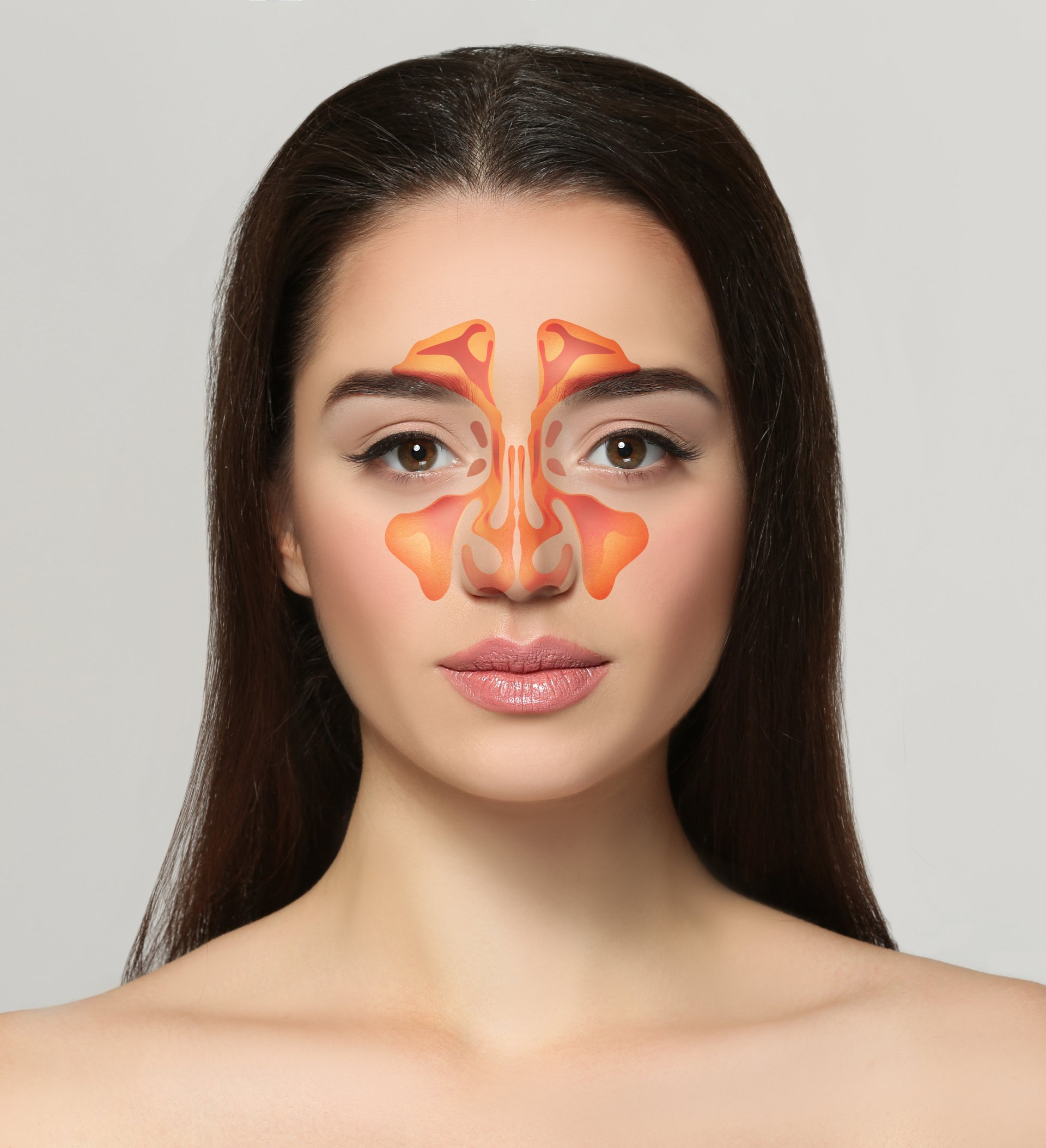
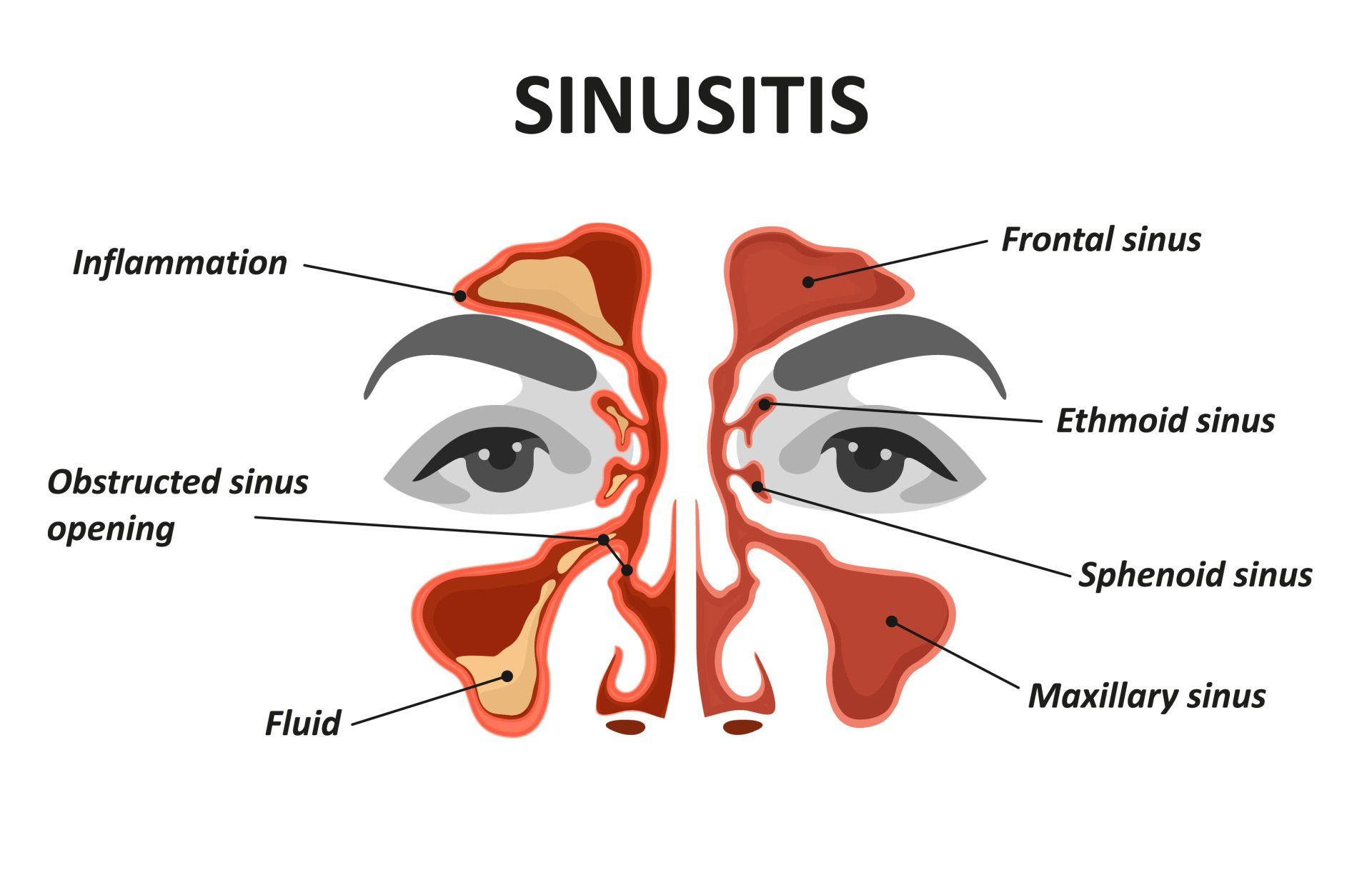
Other medical treatments that are aimed at promoting sinus drainage and decreasing inflammation are helpful for viral colds, severe allergies, and sinusitis, and are often recommended early in the course of treatment. Most are available over-the-counter. The use of oral decongestants (such as Sudafed (pseudoephedrine) or phenylephrine) which are found in many cold medicines, saline irrigations and nasal saline sprays, and mucus-thinning agents, such as Mucinex (guaifenesin), may be helpful in increasing sinus drainage and relieving congestion. Antihistamines, such as Zyrtec (cetirizine), Claritin (loratadine), or Allegra (fexofenadine) may be helpful if allergies are involved. The generic forms of these medications are widely available under different names and may be less expensive, so ask your pharmacist for assistance. Also, patients with heart conditions or high blood pressure should avoid using oral decongestants, such as Sudafed, unless approved by their physician. The nasal lining can become very dried out during a viral cold or sinus infection, so remember to drink plenty of fluids to promote good drainage from the sinuses. Use of a bedside humidifier at night may also be helpful.
Nasal Polyps and Allergies
Nasal polyps are fleshy, watery-appearing swellings or growths that arise from the lining of the nasal and sinus cavities. They are found more commonly in patients with allergies, chronic sinusitis, and asthma. They are also associated with certain hereditary conditions, such as cystic fibrosis. They may vary in size, and while generally benign, may cause problems by blocking the drainage pathways of the sinuses making a person more susceptible to developing sinus infections. Larger polyps may fill the entire nasal cavity and cause blockage to airflow. They may also cause a decrease in sense of smell.
True nasal polyps are generally bilateral. Nasal polyps found only on one side are unusual and should be checked and possibly biopsied for the presence of cancer.
The exact cause of nasal polyps is unknown but may be the result of chronic inflammation.
Patients with small nasal polyps may have no symptoms. Other common signs and symptoms of nasal polyps include:
- persistent nasal congestion or stuffiness
- runny nose
- decreased or complete lack of sense of smell and/or taste
- frequent sinus infections
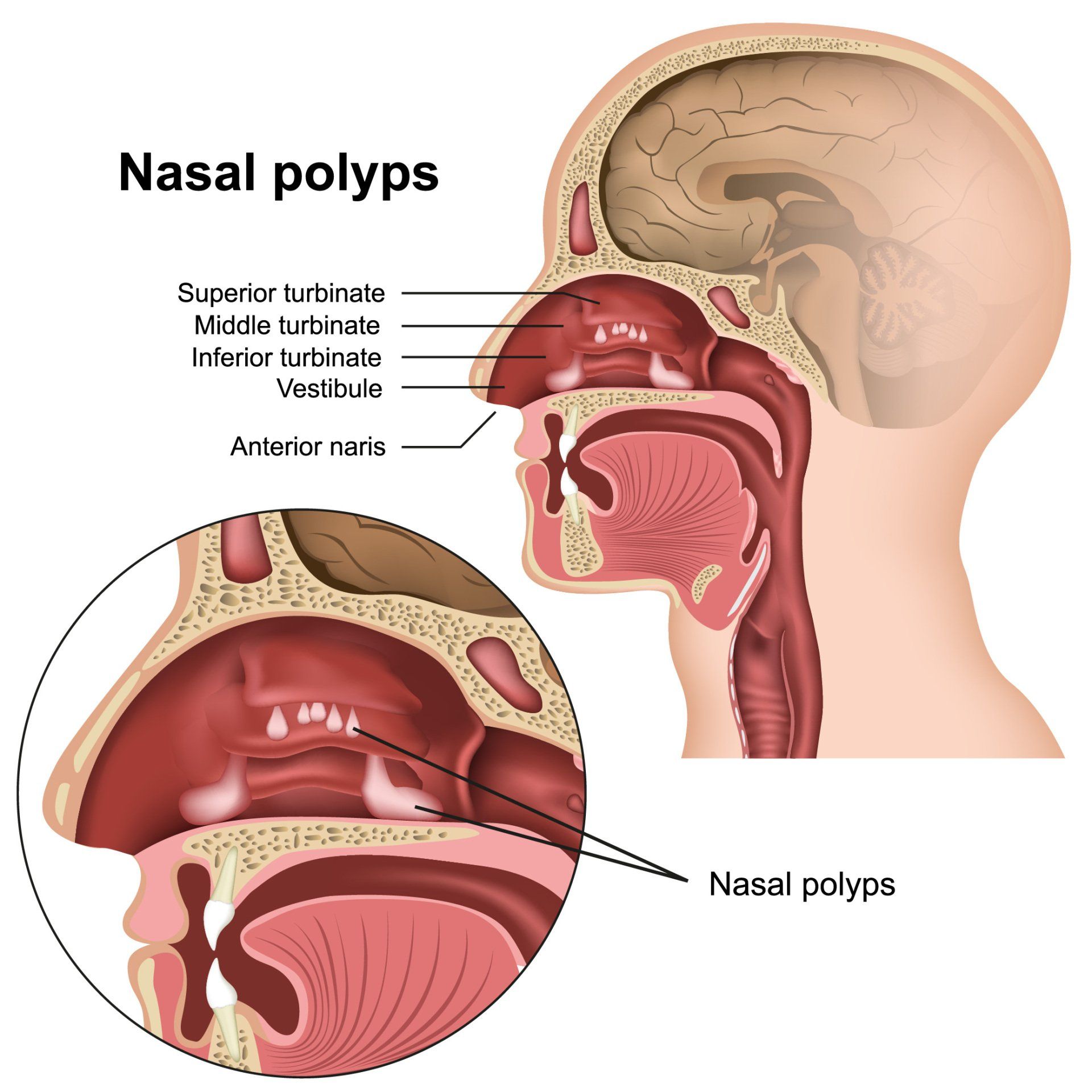
Diagnosis of nasal polyps generally requires a nasal endoscopy and a CT (computerized tomography) scan of the sinuses. Nasal endoscopy is a more detailed examination of the nasal cavity using a small, lighted, magnified scope, usually performed by an otolaryngologist (ear, nose, and throat physician). This is an office procedure performed with some light, topical anesthesia. Testing for allergies may also be recommended.
Treatment of nasal polyps often includes management of underlying allergies, if present, and may include topical nasal steroid sprays, antihistamines, and allergy shots (allergy immunotherapy). Oral steroids, such as prednisone, are sometimes used to obtain temporary relief. Nasal polypectomy (removal of individual polyps) or endoscopic sinus surgery may be recommended in more extensive cases.
Nasal and Sinus Surgery
Nasal and/or sinus surgery may be indicated for treatment of a variety of common conditions that we see at Davis ENT Specialists. Surgery is generally indicated only after a patient has failed medical treatment.
Common procedures:
Septoplasty: A septoplasty is a surgical procedure to correct a deviated septum. The nasal septum is made of cartilage and bone and divides the nasal cavity into two sides. Sometimes the nasal septum is crooked, and a portion of it may block the nasal airway. This is referred to as a "deviated septum." The most common reason for recommending a septoplasty is for relief of nasal obstruction, although it may be recommended for other select causes as well. Septoplasty may be recommended alone, or in combination with other procedures such as reducing the size of the inferior turbinates or endoscopic sinus surgery.
Turbinate reduction: Turbinates are structures on the side walls of the inside of the nose that are made of bone and soft tissue. They warm and humidify the air as it passes through the nasal passages. Sometimes, the inferior turbinates can become swollen and enlarged, causing obstruction of airflow through the nose. The swelling can sometimes be reduced by the use of medications such as topical nasal steroid sprays, or other allergy medications. If they remain enlarged and continue to cause nasal obstruction, a patient may be a candidate to consider a procedure to reduce the size of the inferior turbinates.
Endoscopic sinus surgery: also referred to as "functional endoscopic sinus surgery (FESS)", is a minimally invasive form of sinus surgery using small rigid nasal telescopes (nasal endoscopes) and small instruments to open the sinuses. The development of fiberoptic nasal endoscopes in the 1950s and subsequent refining of surgical techniques in the 1970s has led to great advances in surgical treatment of patients who suffer from sinusitis. Endoscopic sinus surgery may be indicated in patients who fail to clear chronic sinus infections with medical treatment or for those whom have recurrent episodes of sinusitis caused by anatomic narrowing of the sinus openings. Endoscopic sinus surgery may also be indicated for removal of nasal polyps, or certain types of nasal tumors.
Endoscopic sinus surgery has some advantages over traditional open sinus procedures. The surgery is almost always performed through the nostrils, so there are no visible scars on the face. There is generally less resection of tissue, so that healing is usually faster, and there is less postoperative pain and bleeding. Nasal packing is rarely used. In most cases, it is performed as an outpatient procedure.
Balloon Sinuplasty: Balloon Sinuplasty™ technology is an FDA-cleared, endoscopic, catheter-based system for patients suffering from sinusitis. This treatment is used in cases of early sinusitis before nasal polyps have developed. This procedure is often done in the office setting and is used in the operating room in cases where the anatomy is very narrow.
Balloon Sinuplasty™ technology uses a small, flexible tube with a dilating balloon on the end. Dilation is used to open up blocked sinus openings. After the sinus balloon is inflated, it gently restructures and widens the walls of the passageway while maintaining the integrity of the sinus lining without significant bleeding or tissue removal.
Image Guided Navigation: Image guided navigation is similar to a global positioning system (GPS) for the sinuses. This technology has been a significant advance in the field of endoscopic sinus surgery and skull base surgery. An image guided CT scan or MRI provides the map for the system, and a computer constantly calculates the position of certain trackable sinus instruments in relation to a patient's sinus anatomy. This is helpful to surgeons as they navigate close to neighboring structures such as the eye and brain that surround the sinus cavities.
While image guidance has been increasingly used in sinus surgery, it may not be required in all cases. Some types of cases that image guidance may be particularly useful are in cases of difficult sinus anatomy, patients with a history of previous sinus surgery, nasal polyps, cerebrospinal fluid leaks, and tumors of the skull base.
In Office Technology
At Davis ENT Specialists we are committed to incorporating technology into our practice to provide the safest, most effective, and accessible sinus care to you and your family members. Here are just a few examples.
Nasal Endoscopy: Many of our new patients are nervous about undergoing sinus examination with a nasal endoscope. Your safety and comfort are our top priority. Prior to your nasal endoscope exam, you will be sprayed with medication that will decongest and numb your nasal passages. The endoscope will allow your provider to look deeper into your sinuses than with traditional instruments. We have stocked our clinics with 3 mm (pediatric) endoscopes to ensure you are as comfortable as possible.
In Office CT Scan: Many of our new or return patients will need a CT scan of their sinuses at their visit. For your safety and convenience, we offer low-dose CT imaging at our office. Low dose CT scanners such as the Xoran MiniCat CT system pictured here allow a 10-50-fold reduction in effective radiation dose compared to conventional CT imaging of the sinuses. A CT scan is a common diagnostic tool in our practice and our imaging protocols ensure that this procedure is both safe and convenient for our patients.
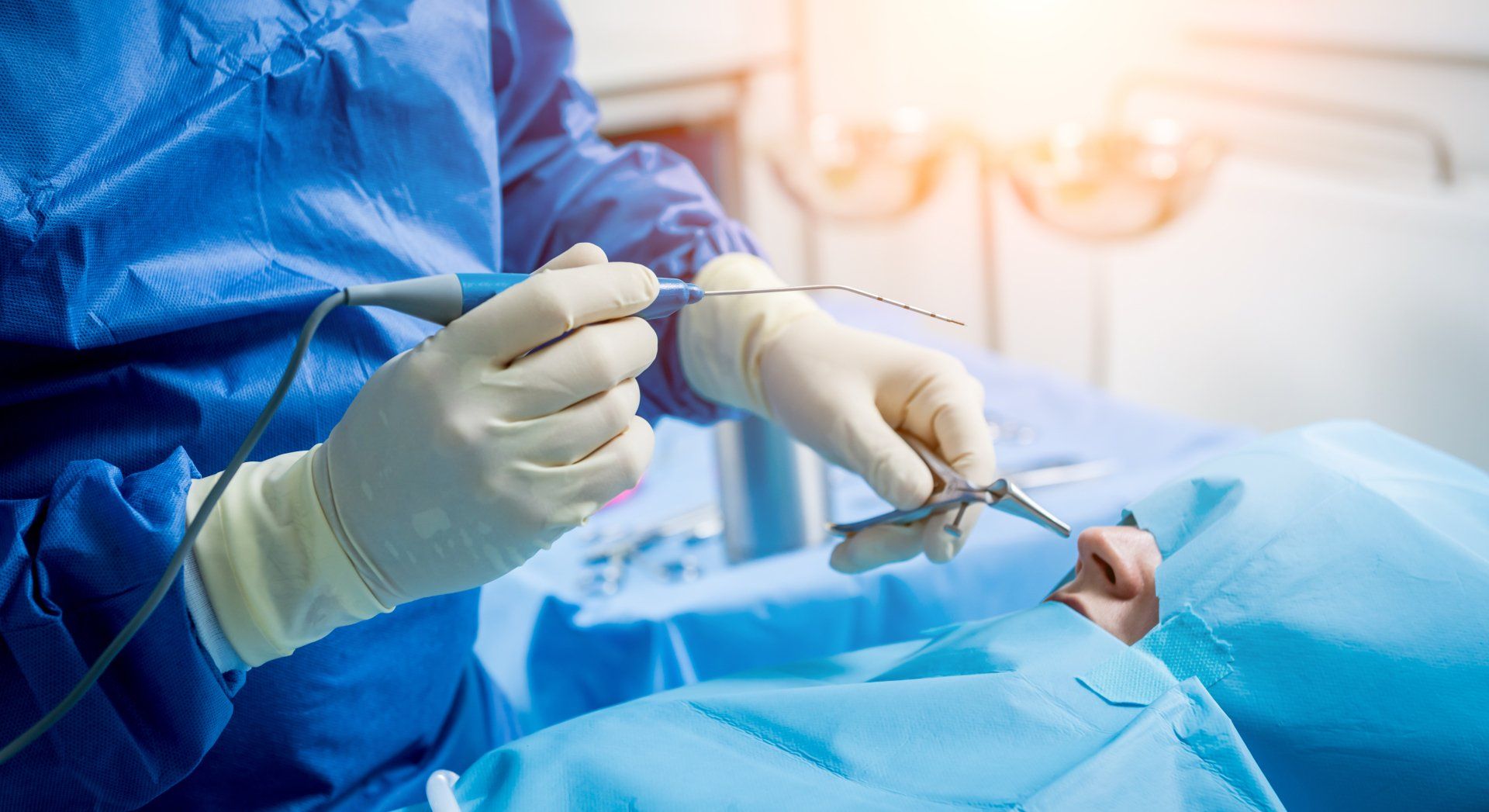
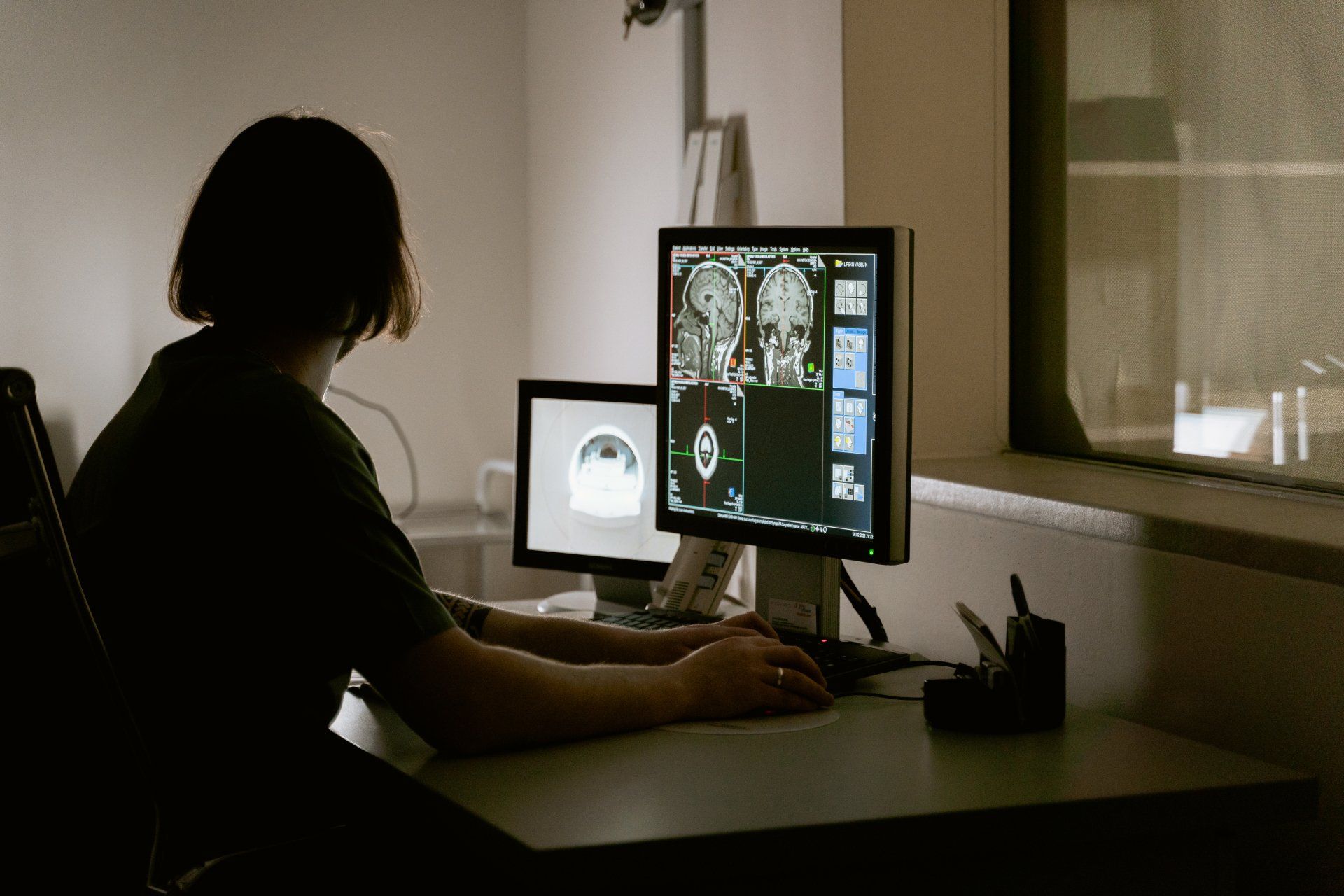
-
Nasal & Sinus
Read more →We can help with every type of installation, maintenance and repair.
-
Sleep Lab
Read more →We can help with every type of installation, maintenance and repair.
-
CPAP & Supplies
Read more →We can help with every type of installation, maintenance and repair.
-
Complete ENT
Button

The region's premier ENT Specialty Center.
Location
407 S. Medical Arts CT, STE C
Gillette, Wyoming 82716
Call
307-686-7346
Fax
307-682-1485
Clinic Hours
- Mon - Thu
- -
- Friday
- -
- Sat - Sun
- Closed
All Rights Reserved | Davis Ent | Website by Tout Advertising




